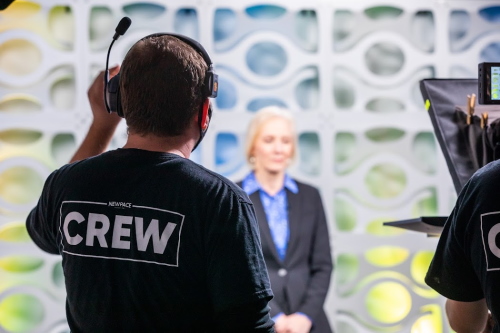In the midst of the COVID-19 pandemic, returning to the workplace is likely a whole new experience for both employers and employees.
No longer a mundane routine of making the commute, finding a parking space and clocking in, showing up for work can involve a host of questions and a plethora of new safety measures that need to be answered, communicated and implemented before the job can begin.
All of a sudden, companies returning to operations must focus on a new normal for employee training and safety requirements.
For instance, the National Safety Council (NSC) offers up these types of employee questions that need answers:
- How will my workplace avoid becoming a transmission hub for COVID-19?
- Will my workplace conduct testing and screening of employees, contractors, vendors and visitors?
- How will I know if I’m at direct risk for exposure?
- What happens after a colleague or I test positive?
- Will we be providing contact tracing information to local and state health departments?
- What about HIPAA, ADA and OSHA compliance?
Producing high-quality industrial safety videos is one of the most effective ways to communicate new information and to show the new procedures and employee training that accompany it. Safety videos for manufacturing, construction, healthcare, agriculture, maritime and other industries can help employers explain the complexity of this new normal in a quick, memorable way.
Video for manufacturers long has been an efficient medium to educate and train employees in safety video tips, assembly-line procedures, industry health topics, equipment protocols, new employee orientation, human-resources procedures, and Occupational Safety and Health Administration (OSHA) laws and regulations.
In fact, OSHA offers an entire webpage of information for workers and employers about the evolving coronavirus pandemic, including interim guidance and other resources for preventing exposure to and infection from SARS-CoV-2, the novel coronavirus that causes the coronavirus disease 2019 (COVID-19).
Along with general guidance, OSHA already has issued alerts for the manufacturing industry workforce; the construction workforce; the package delivery workforce; stockroom and loading dock workers; nursing home and long-term care facility workers; retail pharmacies; rideshare, taxi and car service workers; restaurants and beverage vendors offering takeout or curbside pickup; dental practitioners; and retail workers. This material can assist employers (and their video production partners) in writing scripts for effective, engaging safety videos that can help ensure a successful return to the workplace.
How to Produce Effective, Engaging Safety Videos
Consider Using Humor – Even though the subject of your safety video may be no laughing matter, using a little humor to tell your story can result in fun, engaging, memorable videos to educate or train employees
Many health organizations created funny videos to educate people in light of the COVID-19 pandemic. Iranian theatre star and mime Danial Kheirikhah shows people the best ways to thoroughly wash their hands. Health authorities in Vietnam and Singapore employ elaborate comic book animation to get younger viewers interested in their messages of staying safe.
The United Nations Food and Agriculture Organization in Italy created a TikTok video demonstrating alternatives to the traditional handshake to prevent the spread of coronavirus. These examples not only educate people and show them how to do something, but they also instill optimism and positivity for the future and ease anxiety for the public.
A Presenter Can Bring Your Safety Issue to Life – Especially if you are creating a safety video series, using an on-camera presenter (or animated character) can link scenes together, explain emotional, difficult or customer issues in a conversational way, summarize key learning points, put a human face on your safety message, and sustain the flow of learning in one video or series of videos.
Get Employee Buy-In – It’s always stronger to lead by example rather than highlighting the wrong way to accomplish a task. By focusing on the proper procedure, the standard steps or the right routine, employees will learn faster and avoid wasting time on things they don’t need to know to get the job done.
Include Co-Worker Testimonials – Workers often are influenced by other workers more positively than management or C-suite dictations. Harness the power of peer group influence in your safety video by using short interviews of co-workers explaining and endorsing your company’s safety message.
Create Animated Explainer Safety Videos – Video combines the power of two senses, sound and vision. Since the human brain is programmed to retain visual content better—the average viewer remembers 95% of a message when they watch it and only 10% of a message when they read it—using graphics, live footage, sound effects, a lively voiceover, fun music and animation can make a more positive impression.
Add Bonus Content – If you plan to produce enriched media distributed online, you’ll have the opportunity to include additional forms of content with your main industrial safety video, such as PDFs of video transcripts, a “safety channel” on the company website where employees can watch and re-watch videos, links to other relevant training videos, or a compilation of “safety video outtakes.”
Ready to Produce a High-Quality Industrial Safety Video?
Since 2007, we’ve helped our industrial clients accomplish their marketing goals with industrial video production that illuminates their unique audiences and inspires them to action.
Find out how our simple four-step process for producing high-level industrial safety video content can work for you—and don’t forget to take a look at our featured work.






